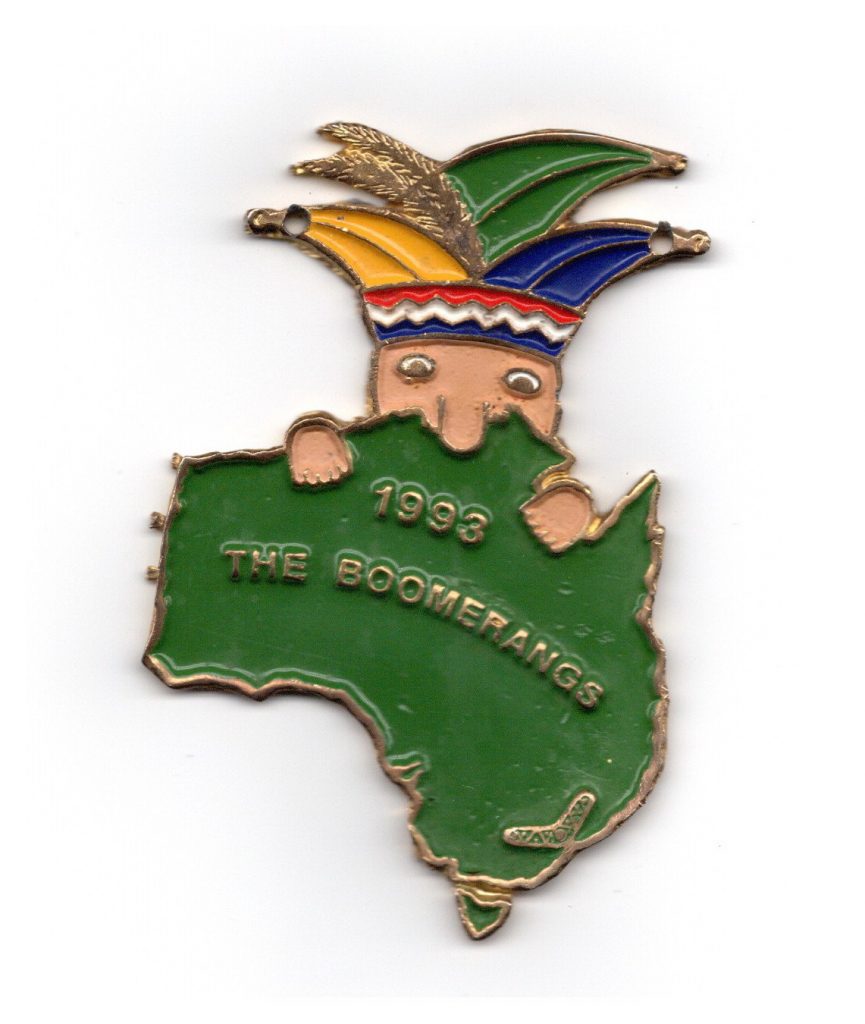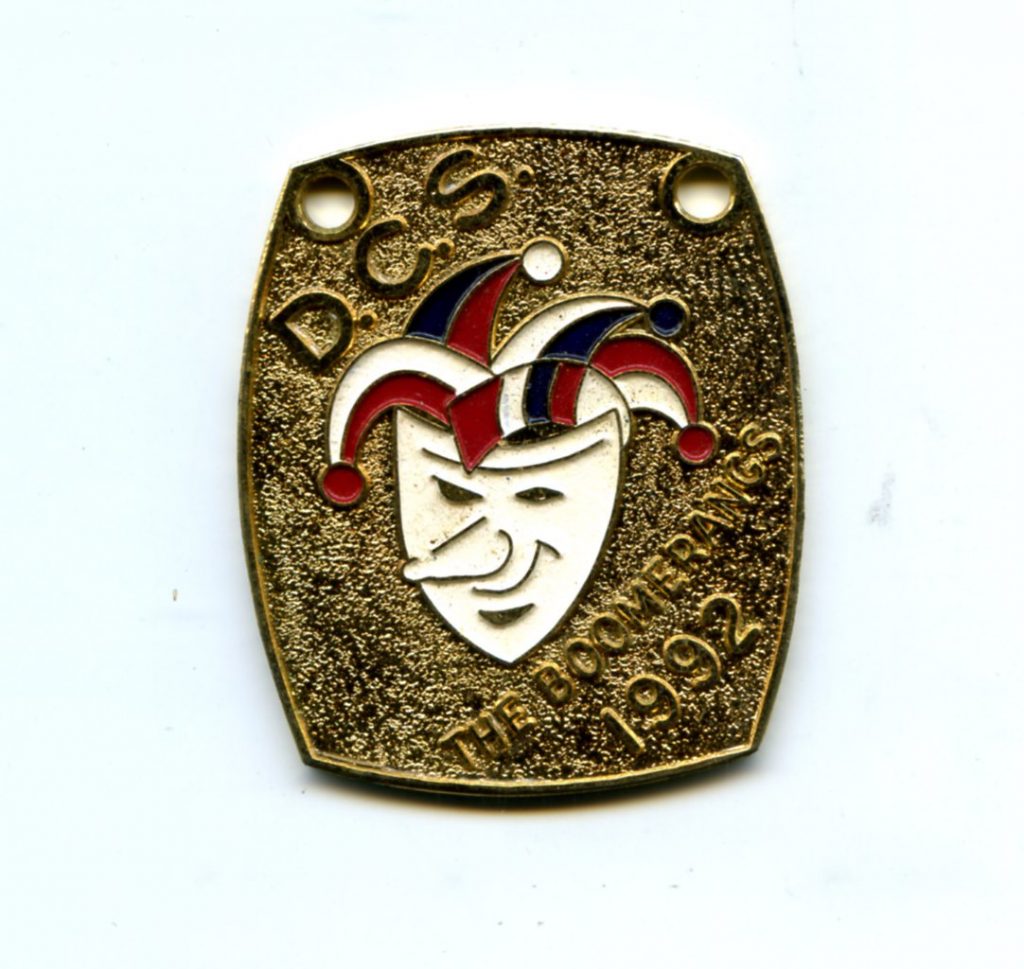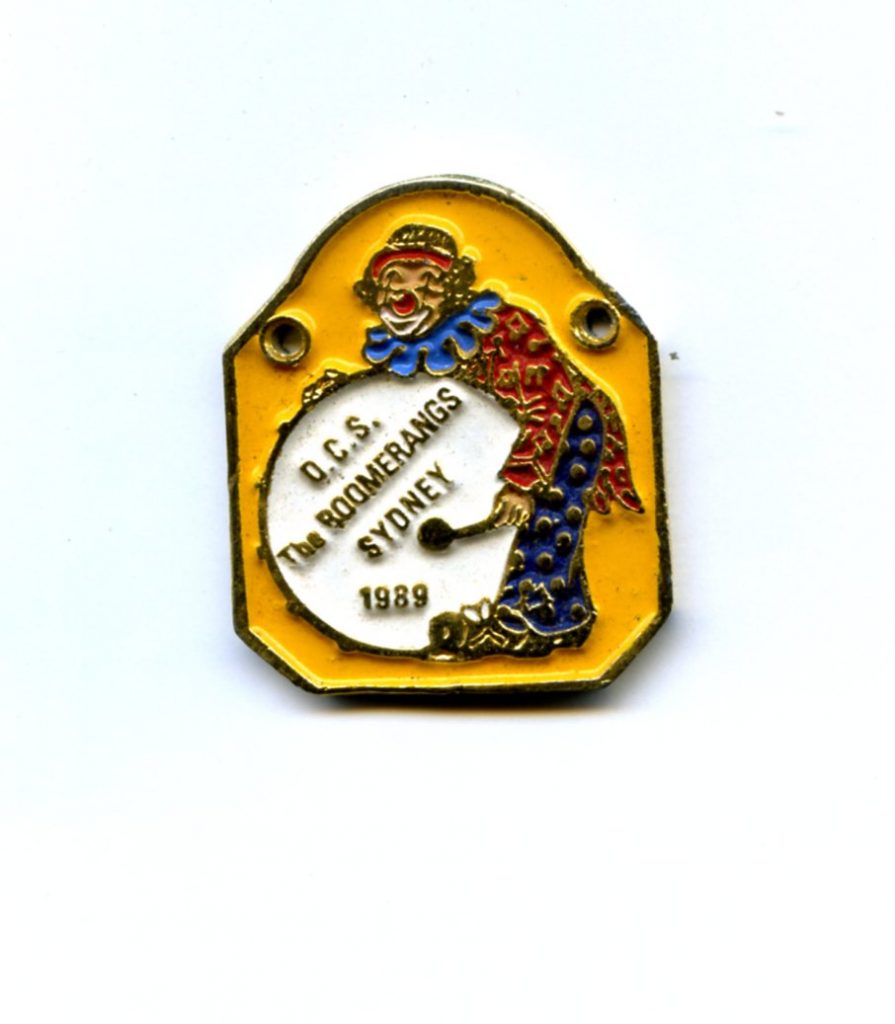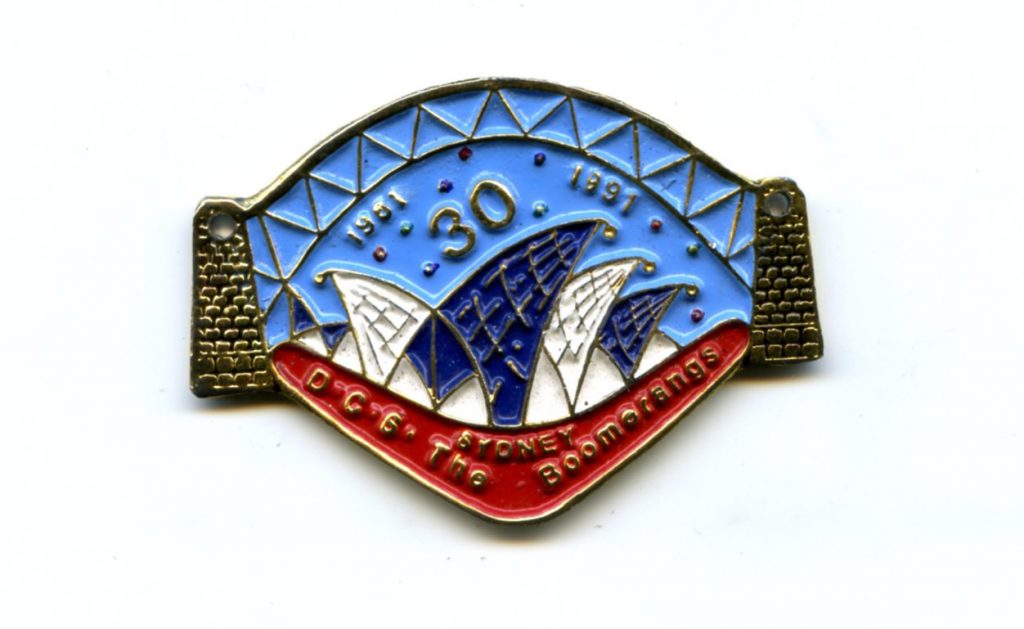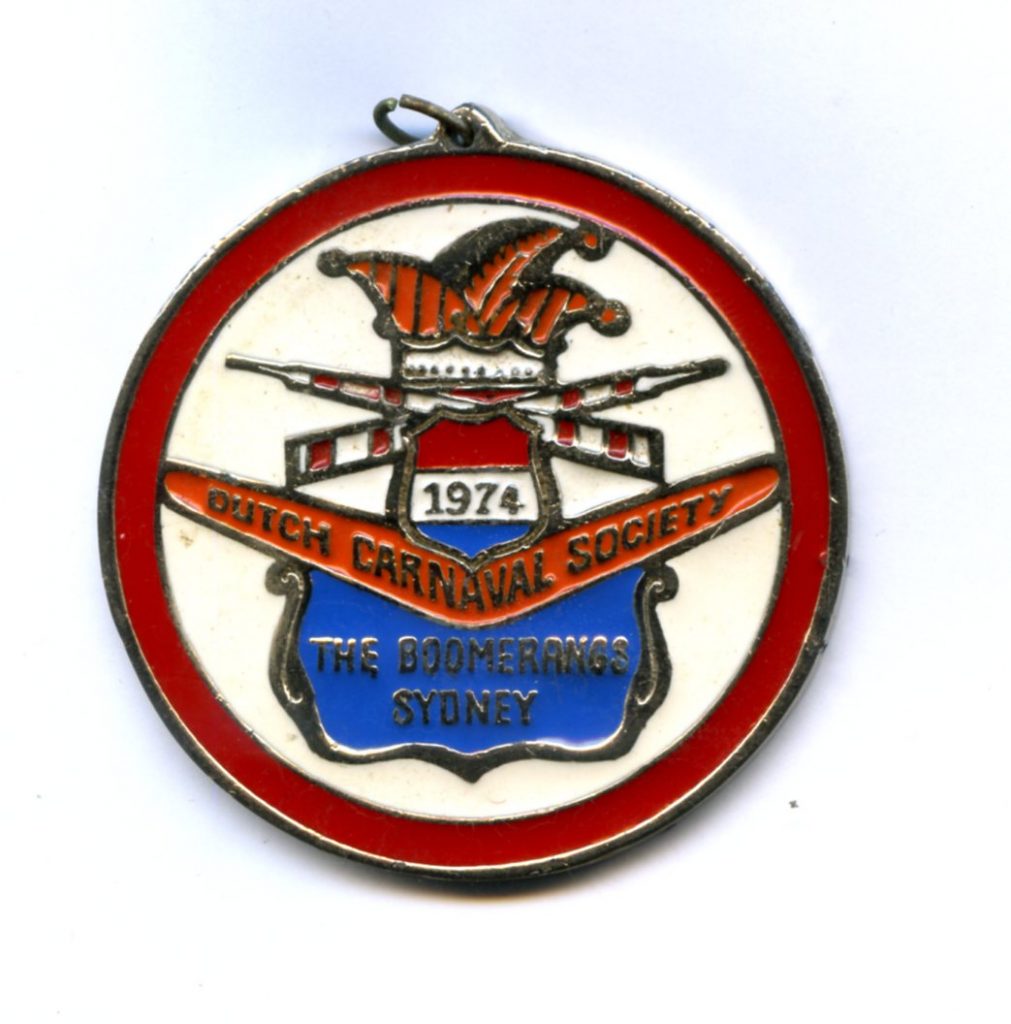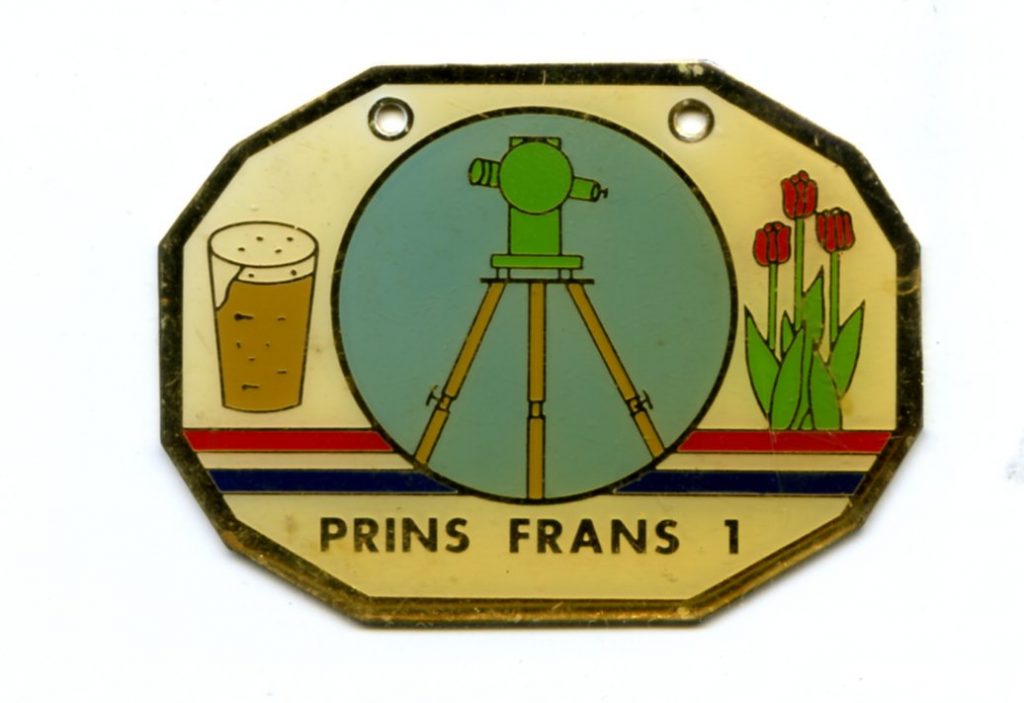The following text is from a booklet published by the Federation of Netherlands Societies Ltd. in February 1985. The research for this booklet was done by Mijntje Hagen.
Nederlandse carnavalsvereniging De Boemerangs.
The Boomerangs keep one of the oldest traditions of Europe alive, that is the yearly Festival before Lent, “Carnaval”. A big party is made of it, complete with the election of a “Prins Carnaval”, his Lieutenants and entourage. The greatest ball is in March, followed by a Mid-Winter ball and a closing ball in October or November, when the ‘Prince’ of the year is ‘buried’, by voluntarily stepping down.
Because of the overwhelming enthusiasm and interest in these festivities, from ‘fair dinkum Australians’, the Boomerangs have split up in 2 divisions. One to accommodate the people living in the Southern part of Sydney and one for those ‘above’ the bridge. It is advisable to order tickets for their balls well in advance to avoid disappointments.
In 1961, after lengthy discussions in the Bankstown Club, the society was founded and given the extensive name, “Waar doen we het van” (‘where does the money come from?’). Well, the money came through action and in February the first ball was sent rolling in co-operation with the Netherlands Society in Bankstown. Every member of the carnival society had to be guarantor for the princely sum of 10 Pounds, this was in case of shortage of funds (through not enough tickets being sold) to pay the bands, rent for the hall and other expenses. As well as that, the members had to pay for their own tickets and do a ‘carnaval show’.
The fears were fortunately unfounded; that evening was a success and so were all the balls that followed. Less successful was the name. It was too cumbersome and for Australians, difficult to comprehend. Somebody suggested “The Boomerangs”, because like a boomerang, ‘carnaval’ returns each year. The new name required a constitution and one of the rules was: dinner suits for all men. Despite the popularity of jeans, this tradition is still adhered to. And for a long time to come “The Boomerangs Alaaf” will be heard.

